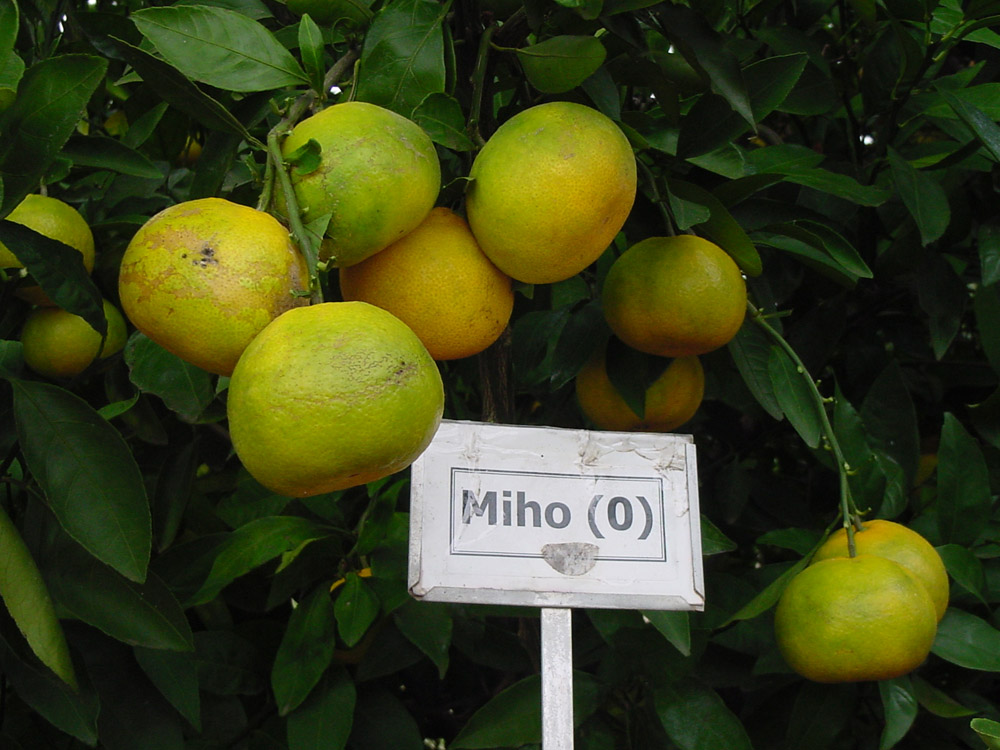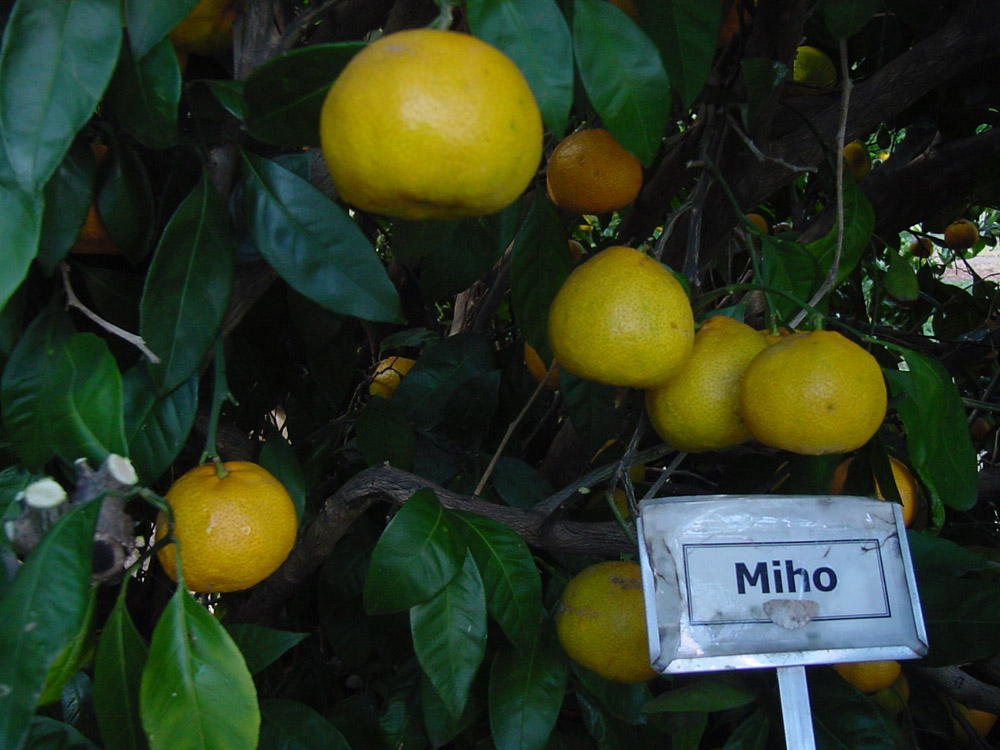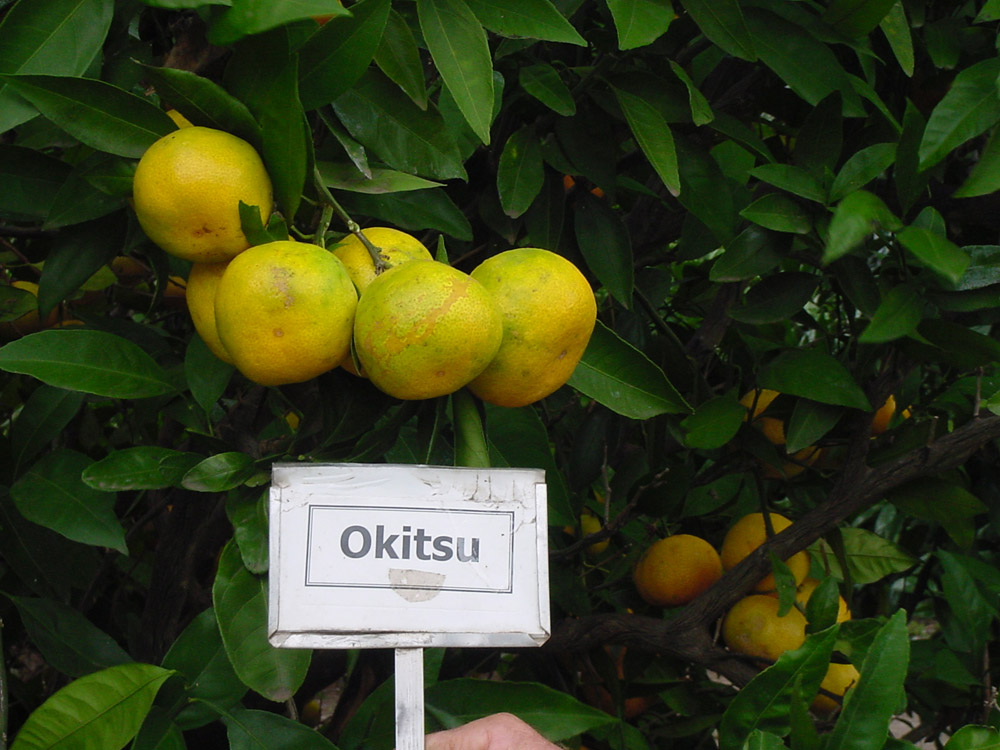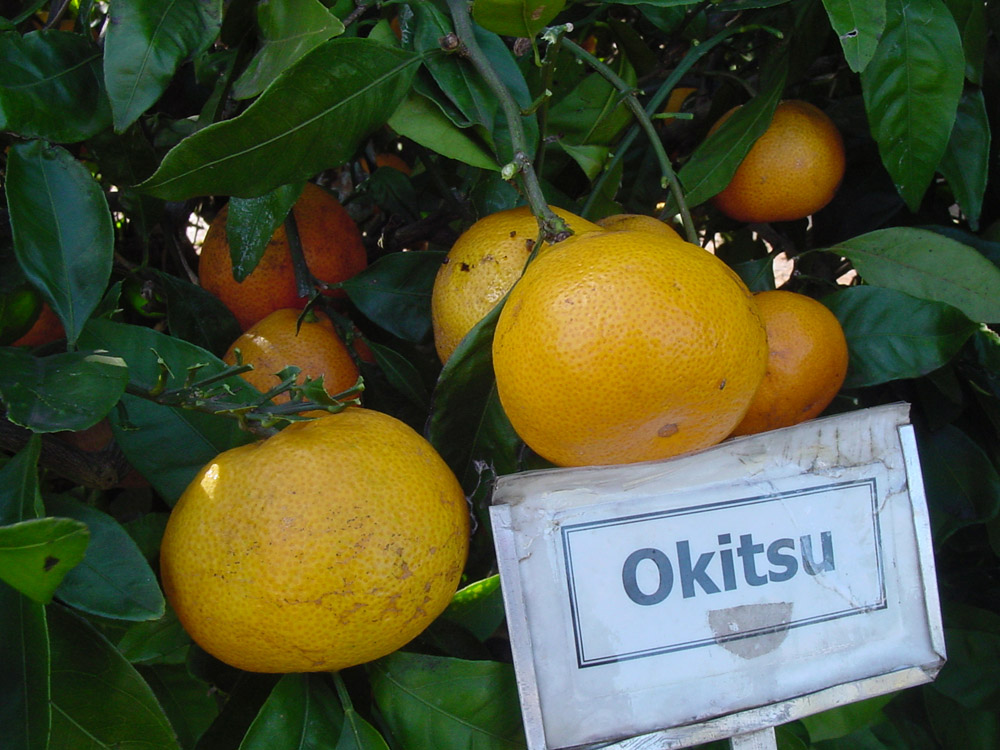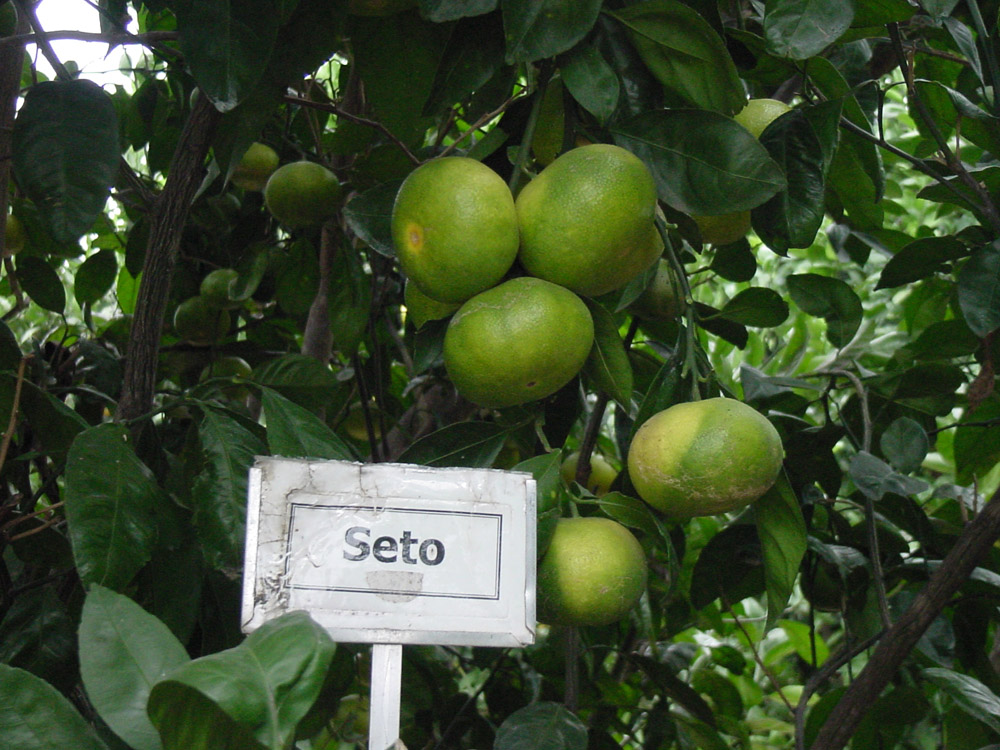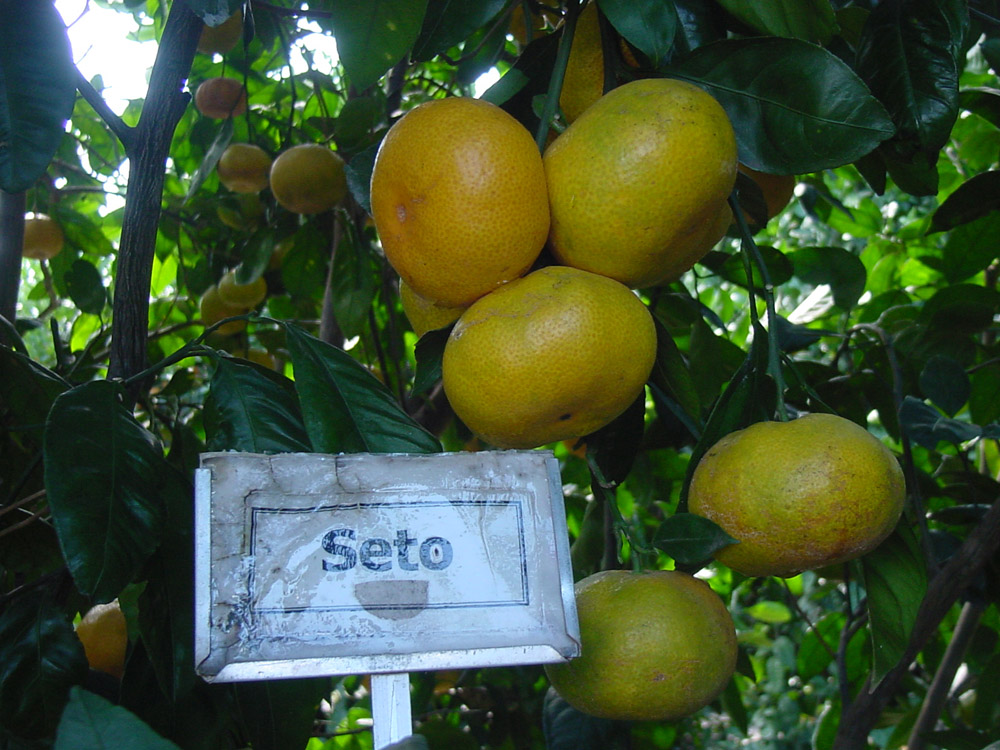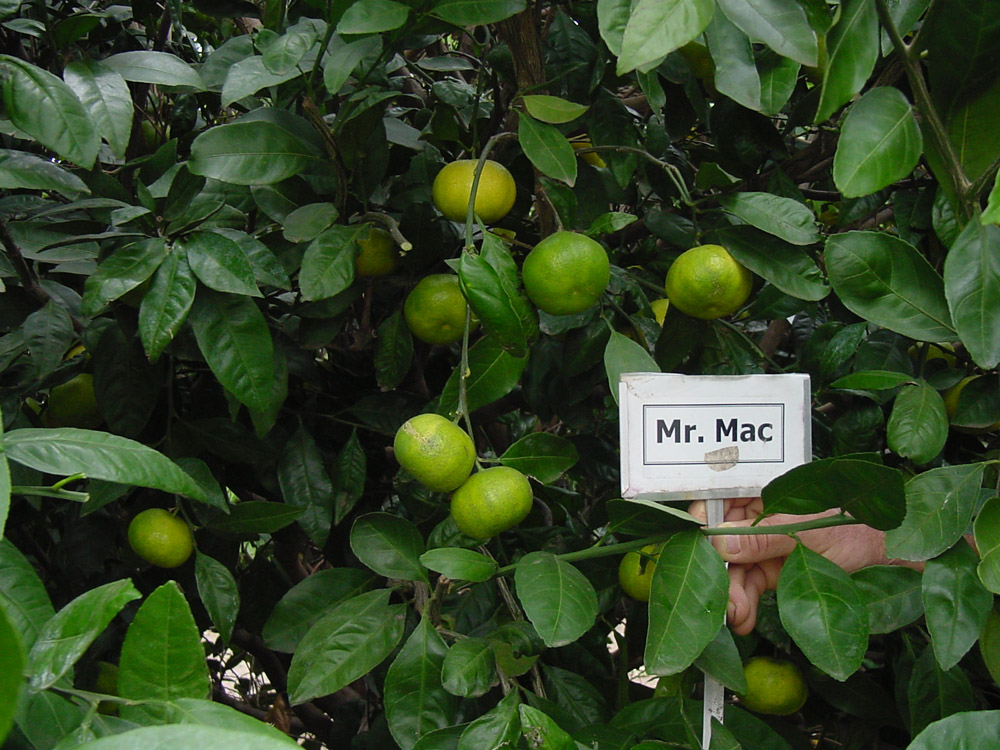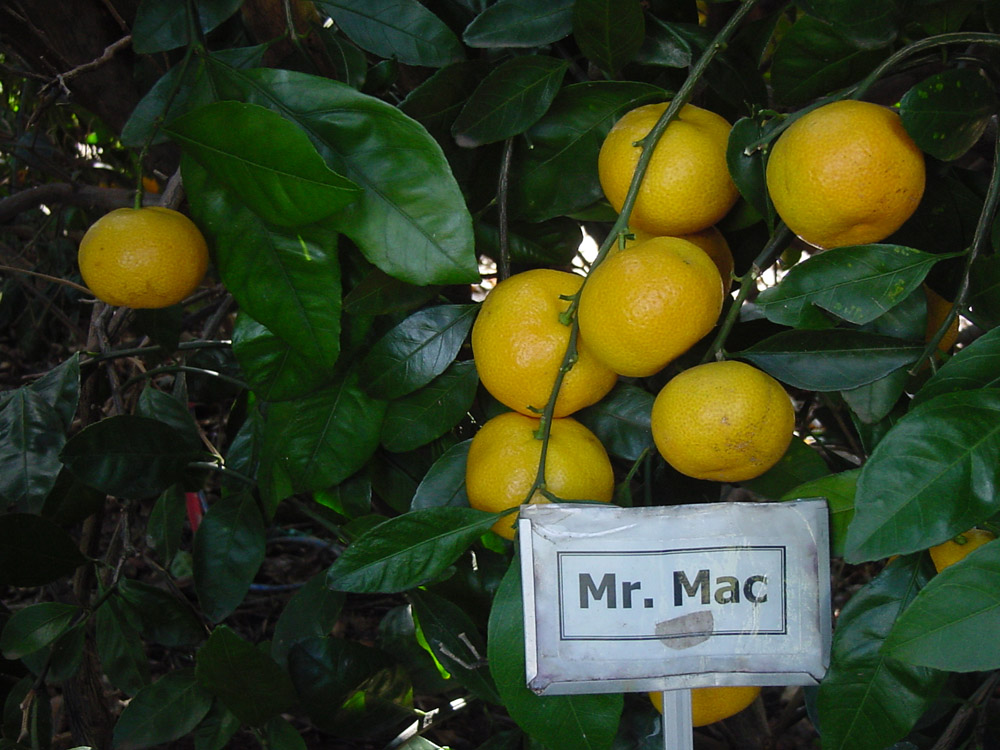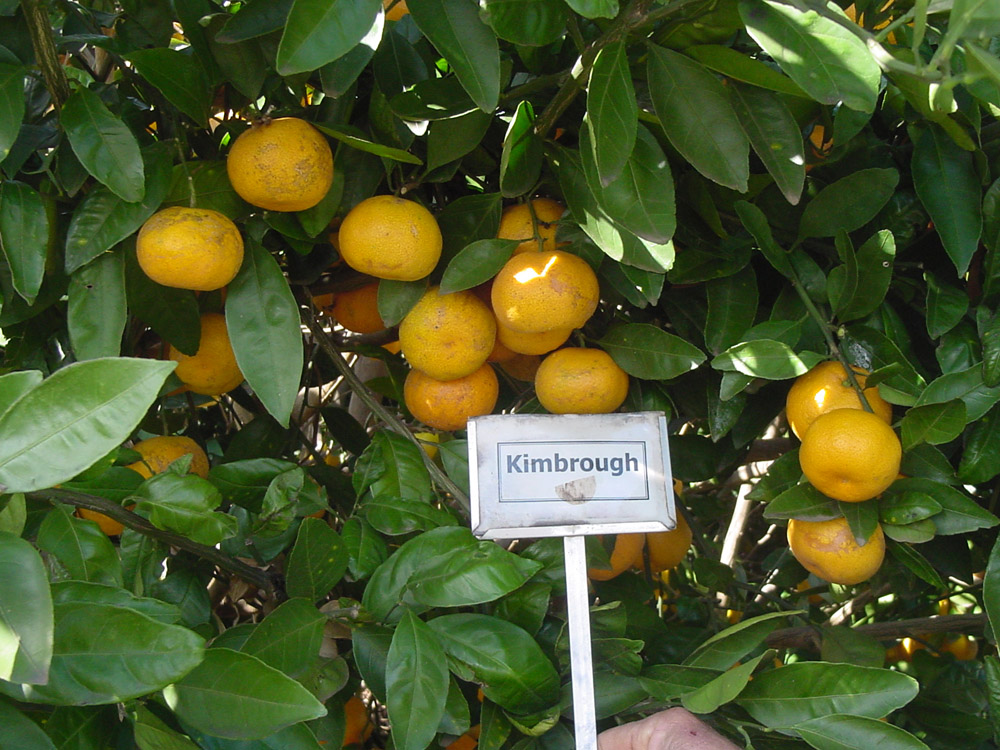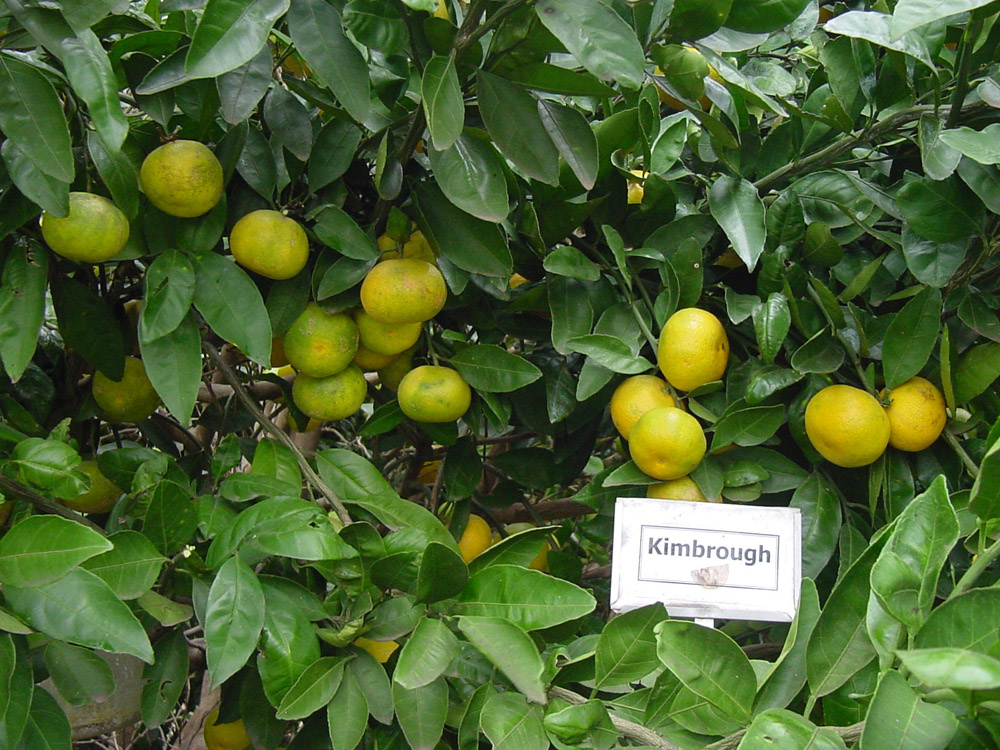Citrus trees are among the most popular home fruit trees in Texas. A couple of the most common questions regarding harvesting the fruit are, “When is citrus ready to pick?” and, “Should I pick all my citrus to keep them from being damaged by frost?” The following table entitled: “Sugar Development of Satsuma Cultivars In South Central Texas During 2004-2005” gives the accumulated sugars of the new satsuma mandarin varieties in the fall of 2004. This data shows that most of the varieties had a soluble solids (sugar) reading of 10 by the middle of November but by the middle of December more of the varieties registered a 10 or more soluble solids. This data shows that the longer you can leave them on the tree, the sweeter they will get until they begin to drop in January. However, so you won’t have to eat a lot of fruit in a short period of time, you can go ahead and eat some of your Satsumas even if they are still somewhat green and tart in October and November. How soon the fruit reaches its maximum sweetness depends on fall weather conditions.
Knowing when to harvest any citrus fruit involves the question of its degree of maturity. Technically speaking, there is no ripening process in citrus fruits and no such thing as “tree ripe” fruit. Citrus fruits pass from immature to mature and finally to an over mature condition while remaining on the tree, but the changes are slow and spread over several months. The only way for homeowners to determine maturity is to taste the fruit. Fruit color is a poor indication of ripeness, because many fruits have fully colored rinds a long time before they can be eaten and some fruit are green when the sugars are high enough to make a delicious tasting citrus. Don’t expect citrus fruits to increase in sweetness or ripen more fully once you’ve picked them, as do peaches and some other fruits. When picked at any stage of maturity, the citrus fruit does not change after picking, except that it may decay or slowly dry out.
Unless damaged by freeze, citrus fruit keeps longer on the tree than if picked and stored so you’re not faced with an enormous harvest all at once. Also realize that a mere frost of 30 to 32 degrees F will not injure the trees or fruit. Rather, it takes an extended number of hours below freezing to cause damage to both the tree and fruit. For example, it takes about four hours at 27 degrees F to form ice in a grapefruit; probably a bit less in smaller fruit. Of course lush tender growth can be injured, but for the most part the trees should not really be in an active state of growth at this time of the year. Some citrus types will ripen a late summer crop from the spring bloom, others will take up to a year or more to mature, and some continue to bloom and fruit year-round. Once you begin to harvest, pick fruit from the lower branches first, leaving the high fruit until later in the season. There are two reasons for this; one is that frost is often more severe near the ground, so low hanging fruit is more likely to be damaged when the weather is cold; secondly, a fruit-rotting fungus disease called brown rot may splash from the soil, where it lives, onto fruit hanging low in the tree. Brown rot can penetrate unblemished citrus fruit rind, unlike other decay organisms which require a break in the rind to cause injury.
When you’re picking citrus fruit that you plan to store for awhile, be careful not to bruise or break the skin. Satsuma harvest should involve clipping ripe fruit off with pruning shears instead of pulling it to avoid skin damage. Fruits that are cut or scratched during harvesting will rot fairly quickly in storage. Citrus fruits with perfectly sound skin are fairly decay proof, and will last in cool, moist storage for several weeks (38 to 48 degrees F., 85 to 95 percent relative humidity). Under dry conditions at room temperature, fruits develop off-flavors and shrivel within a week to 10 days. The yields for 1999, 2000 and 2001 are presented in Table 2. Trees on sour orange were the most precocious trees in the study and have produced the most fruit to date. Own-rooted trees produced their best crop in 2001. ‘Miho’ on sour orange has produced the most fruit and ‘Seto’ on sour orange has been very consistent. Fruit quality has been variable due to the vegetative nature of the trees. Fruit quality was the best in 2001. ‘Seto’, regardless of rootstock, had the best fruit quality in 2001. Based upon several years of observation and testing, both varieties should do well in other locales in Texas. The trees have been indexed and found to be free of citrus tristeza virus at the Citrus Budwood Foundation at the TAMU-K Citrus Center in Weslaco and will be entered into the Certified Citrus Budwood program for further testing, after which time budwood will only be available from that program.
Table 1. Characteristics of Satsuma varieties in Texas (Sauls, 1998)
| Variety | Fruit Size | Seed | Peel Color | Flesh Color | Peel Adherence | Season |
| Owari | Medium | 0-4 | Red-orange | Orange | Loose | Nov-Dec |
| Armstrong | Large | 0-4 | Red-orange | Lt-orange | Loose | Oct-Nov |
| Kimbrough | Medium | 0-4 | Red-orange | Orange | Loose | Nov-Dec |
| Obawase | Large | 0-4 | Red-orange | Orange | Loose | Oct-Nov |
| Okitsu | Medium | 0-4 | Red-orange | Orange | Loose | Nov-Dec |
| Miho | Large | 0-2 | Red-orange | Orange | Loose | Oct-Nov |
| Seto | Large | 0-2 | Red-orange | Orange | Loose | Oct-Nov |
| Mr. Mac | Medium | 0-4 | Red-orange | Orange | Loose | Nov-Dec |
| Changsa tangerine | Medium | 20-30 | Orange | Orange | Loose | Oct-Jan |
Table 2. Yields of the Satsuma variety trial planted at the Texas A&M Research and Extension Center in Uvalde Texas over 3 Years
| Average Yield (lbs per tree) | ||||
| Variety | Rootstock | 1999 | 2000 | 2001 |
| zKimbrough | Sour orange | 9.1 | 200.2 | 70.7 |
| Okitsu | Sour orange | 3.9 | 88.7 | 137.3 |
| Okitsu | Own root | 0.0 | 0.0 | 1.0 |
| Miho | Sour orange | 2.4 | 124.3 | 162.3 |
| Miho | Own root | 0.0 | 3.0 | 31.8 |
| Seto | Sour orange | 0.5 | 84.8 | 83.4 |
| Seto | Own root | 0.0 | 16.5 | 76.0 |
Table 3. Texas Citrus Maturity Standards
| Grapefruit | Oranges | ||
| Total Soluble Solids | Minimum Ratio1 | Total Soluble Solids | Minimum Ratio1 |
| 9.0 | 7.2 : 1 | 9.0 | 9 : 1 |
| 10.0 | 7.0 : 1 | 8.5 | 10 : 1 |
| 11.0 | 6.8 : 1 | ||
| 11.5 | 6.5 : 1 |
Sugar Development of Satsuma Cultivars in South Central Texas During 2004-2005
Data collected in Uvalde, TX. Readings are sweetness indicators as per soluble solids. Each number is the average of 16 samples; 2 readings of fruit from the east and 2 readings of fruit from the west sides of trees in 5 replicates from each cultivar/rootstock combination listed.
| Harvest Date | ||||||
| Variety & rootstock | Oct. 20 | Nov. 3 | Nov. 17 | Dec. 1 | Dec. 14 | Jan. 7 |
| Miho – own | 9.3 | 9.8 | 10.1 | 10.1 | 10.6 | 11.8 |
| Miho – sour orange | 9.1 | 9.8 | 10.6 | 10.4 | 10.6 | 11.6 |
| Okitsu – own | 9.1 | 9.4 | 10.2 | 9.9 | — | — |
| Okitsu – sour orange | 9.3 | 9.5 | 10.3 | 10.2 | 10.4 | 10.8 |
| Seto – own | 8.6 | 8.9 | 9.4 | 9.7 | 10.3 | 10.7 |
| Seto – sour orange | 8.6 | 8.9 | 9.0 | 9.0 | 9.5 | 10.8 |
| Mr. Mac – sour orange | 8.5 | 9.5 | 10.0 | 10.0 | 10.1 | 10.6 |
| Kimbrough sour orange | 8.6 | 9.1 | 10.7 | 11.1 | 12.1 | 12.5 |
Oranges and citrus turn colors, just about like the leaves on the trees do, they need a little cool weather and some bright, sunny days to make them really get an orange color, even though the sweetness is there. As the data shows, you can leave them on the tree and they will get sweeter but, so you won’t have to eat a lot of fruit in a short period of time, you can go ahead and eat some of your Satsumas even if they are still somewhat green in October. One guy told me they make the best whiskey sours you ever put in your mouth beginning in September. So the oranges are ready even though they’re green. Citrus does store very well on the tree so multiple harvests beginning in October and lasting through February will ensure that you enjoy a long harvest period of this delicious and nutritious fruit. The highest quality Satsuma fruit develops soluble solids or sugar levels in the juice above 9.0. This occurred in early November with all cultivars tested.
The final evaluation of the Uvalde planting was on February 9, 2005. This evaluation was to determine which varieties retained marketable fruit for the longest time. Kimbrough and ‘Mr. Mac’ Owari retained quality fruit longer than any of the others. Okitsu fruit was falling and the fruit was shriveling. Miho and Seto fruit was mostly overripe with Miho developing an off-taste before Seto. Kimbrough, Seto and Mr. Mac were also the latest ripening fruit.
Okitsu and Miho develop higher soluble solids (sugars) earlier than other varieties and are comparable except that Okitsu develops an orange peel color earlier than Miho.
The variety harvesting sequence, according to peel color development and soluble solids level, would be: Okitsu, Miho, Mr. Mac Owari, Seto, and finally Kimbrough.
Kimbrough developed the highest soluble solids for the season at the fastest rate of increase followed by Miho. Okitsu, Seto and Mr. Mac Owari developed the same level of sweetness at the same rate of increase from October to January.
Rootstock made no difference in fruit characteristics or sugar development.
The following photos show the “degreening” (increase in orange color) pattern of Satsuma varieties at two different dates (October 4 and November 17).
